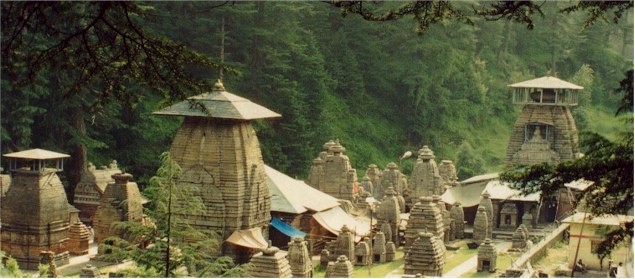- Skip to main content
- Screen Reader Access
- Skip to navigation
- Text Size
- Select Theme Default Theme Yellow Theme Pink Theme Blue Theme
- हिंदी में
Jageshwar has two major complexes of old stone temples. All of them have the curviliner shikaras architecture; and the majority of them are covered with double tiered roofs of slate tiles or corrugated iron.
The first temples, on the right of road, are refferred to as the Dandesvara Group. They are set on two terraces, one above the other, separated by a small brook and surrounded by deodars. The principal temple in this group enshrines a large natural rock as the linga emblem of Lord Shiva. Archaeologists believe that it was constructed round about the 3rd century AD. At one time it also held a beautiful metal image of a person identified as 'Paun Raja' : probably a major patron of this temple. The image is now removed and kept in safe custody by the Archaeological Survey of India.

The Archaeological Survey also protects the second cluster of temples located a short distance along this road and in the little hamlet of Jageshwar. Though the hamlet is small its temple complex is large and impressive.
Situated in walled grounds, at a bend of a river, are over a hundred shrines and temples : all of them made of stone and most of them reflecting a strong northern Indian architectural influence. Jageshwar was a medieval centre of Shaiwism and is regarded as one of the most sacred place in Kumaun. It takes its name from the linga idol of lord Shiva worshipped as Jageshwar and is locally revered as one of the 12 Jyotilingas which are held in particular esteem.
The oldest temple here is the Mritunjaya of the 8th century. This was followed by the temples of Jageshwar, Navdurga, Kalika, Pyushtidevi, Baleshwar and a few smaller ones. All these built by the early Katyuri kings. The late Katyuris built the temple of Surya, Navagraha and Neelkanteshwar between the 11th and 14th centuries. Five small temples are ascribed to the reign of Garud Gyan Chand who held the throne from 1374 to 1419.